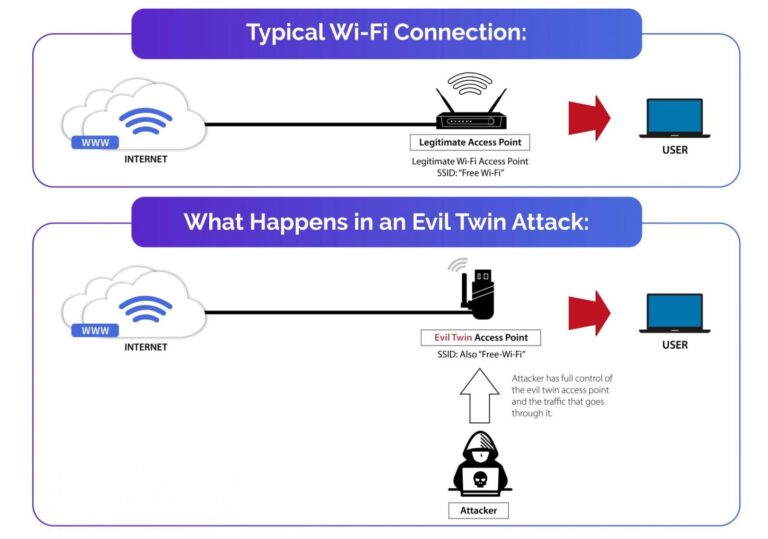What Are Common Cybersecurity Threats For Business?
Cybersecurity threats are a major concern for businesses today as more of their data is stored online and accessed through the internet. Cyber-attacks can include malicious software, phishing scams, and data breaches, all of which can have serious financial and reputational consequences. Common cybersecurity threats for businesses include malware, ransomware, social engineering, data breaches, and weak passwords. All of these can have a significant impact on a business’s operations and profitability if not properly managed. Businesses should take proactive steps to protect themselves from these threats, such as regularly assessing their systems for vulnerabilities and implementing robust security measures.
Overview of Cybersecurity Threats
Cybersecurity threats are a major concern for businesses operating in the digital space. With the rise of sophisticated hacking techniques, it has become increasingly important for businesses to take proactive measures to protect their data and systems from malicious attacks. Common cybersecurity threats come from a variety of sources, including hackers, malware, phishing, and other malicious activities. Each type of attack poses a unique threat to business operations, and it is important to understand the types of threats that businesses may face in order to properly protect their data and systems.
Hackers are individuals or groups that use their technical knowledge to gain unauthorized access to systems and data. Hackers may use a variety of techniques to gain access, such as exploiting system vulnerabilities, utilizing malware, or using social engineering to gain access to sensitive information. Malware is software designed to gain access to or disrupt computer systems. This can include viruses, Trojans, worms, and other malicious software. Phishing is a type of social engineering attack that attempts to gain access to sensitive information through the use of deceptive emails or websites. It is important for businesses to be aware of these common threats and take steps to protect their systems and data.
Businesses can mitigate these cyber threats through a variety of security measures, such as implementing strong passwords, utilizing two-factor authentication, regularly updating software, and educating employees on cybersecurity best practices. Additionally, businesses should consider investing in a robust security solution to protect against the latest threats. By understanding the types of cyber threats and proactively protecting their systems and data, businesses can help ensure the security of their operations.
Types of Cybersecurity Threats
Modern businesses must be aware of a wide range of cyber threats, as cyber-attacks are on the rise and hackers are becoming more sophisticated in their methods. Businesses must understand the different types of threats out there to take the steps necessary to protect their data. Common types of cybersecurity threats include:
Malware: Malware is malicious software designed to damage or gain access to computers or networks. It can be used to steal data, launch ransomware attacks, or disrupt operations.
Phishing: Phishing is a method of attempting to obtain sensitive information such as usernames, passwords, and credit card details by disguising as a trustworthy entity. It is typically carried out through email or instant messaging.
Data Breaches: Data breaches occur when confidential information is accessed without permission. They can be caused by malicious actors, human error, or weak security protocols.
Social Engineering: Social engineering is the use of deception to manipulate people into revealing confidential information. It often involves the use of social media, email, or other electronic communication.
Distributed Denial of Service (DDoS): DDoS is a type of attack in which malicious actors send a large amount of traffic to a website or server in order to overwhelm it and make it inaccessible.
These are just some of the most common types of cyber threats that businesses face today. It is important to be aware of these threats and take steps to protect your systems and data from malicious actors. Investing in cyber security training for employees, as well as reliable security solutions, can help reduce the risk of a cyber-attack.
How Cybersecurity Threats Impact Businesses
The digital landscape has become an increasingly hostile environment for businesses, with cyber-attacks becoming more frequent and sophisticated. Cybersecurity threats have the potential to cause costly damages to businesses, ranging from financial losses to the disruption of operations. It is important for businesses to stay informed of the different types of threats they are likely to encounter and take the necessary steps to protect their data and systems.
A major concern for businesses is the risk of data breaches, which can expose sensitive information such as customer data, financial records, and intellectual property. Additionally, malicious actors can use ransomware to hold businesses’ data hostage until a ransom is paid. Companies should also be aware of phishing attacks, where hackers attempt to gain access to confidential information by sending emails or text messages that appear to be from a legitimate source.
Other potential threats include distributed denial of service (DDoS) attacks, where hackers overwhelm networks with false requests, malware infections, and social engineering attacks, where cybercriminals use deception to gain access to confidential data.
Businesses must take steps to protect themselves from these threats. This includes implementing strong network security measures such as firewalls, regularly updating software and using strong passwords, monitoring networks for suspicious activity, and training employees to recognize cyber-attacks. By taking the necessary steps to protect their data and systems, businesses can protect themselves from cyber threats and ensure their continued success.
Cybersecurity Best Practices
With the rise of cybercrime, it is more important than ever for businesses to protect their data and systems. Developing cybersecurity best practices is essential for protecting against the most common threats. By understanding the most common cybersecurity threats and taking the necessary steps to protect against them, businesses can ensure the safety of their data and systems.
Common threats include phishing attacks, malware, ransomware, and DDoS attacks. Businesses should implement a multi-layered security strategy to protect against these threats. This includes using firewalls, anti-virus and anti-malware software, implementing strong passwords, educating employees about potential threats, and regularly backing up data.
In addition, businesses should also use two-factor authentication, secure their Wi-Fi network, and use encryption to protect sensitive data. They should also invest in a cybersecurity policy that includes guidelines for the use of technology and the reporting of any suspicious or malicious activity. By taking these steps, businesses can reduce the risk of falling victim to cybercrime.
Cybersecurity Solutions for Businesses
As businesses become increasingly reliant on technology, cyber threats are becoming an ever-growing concern. Cybersecurity solutions are the key to protecting data, networks, and systems from malicious attacks. Cybersecurity solutions can be divided into two main categories: defensive solutions and offensive solutions. Defensive solutions include things such as firewalls, antivirus software, and encryption. These solutions help protect systems from external threats. Offensive solutions, on the other hand, involve actively monitoring a system for any suspicious activity. This helps businesses detect threats as soon as possible and respond accordingly.
Businesses should also consider implementing a comprehensive cybersecurity strategy that includes both defensive and offensive solutions. This strategy should include measures to prevent cyberattacks, ways to detect suspicious activity, and a plan of action in the event of an attack. Additionally, businesses should consider investing in employee training to ensure that staff are aware of the latest cybersecurity threats and how to prevent them. Finally, businesses should ensure that all systems are regularly updated to protect against the latest cyber threats. By following a comprehensive cybersecurity strategy, businesses can rest assured that their data, systems, and networks are safe from malicious attacks.
Conclusion
Cybersecurity is a serious issue for any business, and it is important to be aware of the common threats that exist. While it is impossible to be 100% secure, businesses can take measures to mitigate potential risks and protect their data and networks. Businesses should also take the time to educate their staff on cybersecurity best practices and the latest threats. As cyber threats become increasingly sophisticated, businesses must remain vigilant in order to stay safe. By taking the time to understand the common threats and implementing appropriate security measures, businesses can reduce their risk and stay protected.
FAQs About the What Are Common Cybersecurity Threats For Business?
1. What are the most common cybersecurity threats for businesses?
Answer: The most common cybersecurity threats for businesses include malware, phishing, ransomware, distributed denial of service (DDoS) attacks, and data breaches.
2. How can businesses protect themselves from cybersecurity threats?
Answer: Businesses can protect themselves from cybersecurity threats by investing in security software, training employees on cybersecurity best practices, and implementing a comprehensive security strategy.
3. What is the best way to ensure that my business is secure from cybersecurity threats?
Answer: The best way to ensure that your business is secure from cybersecurity threats is to have a comprehensive security strategy in place. This should include regular security assessments, training employees on cybersecurity best practices, and investing in the right security software.
Conclusion
In conclusion, businesses face a variety of cybersecurity threats from malicious actors, including phishing, malware, ransomware, and DDoS attacks. To protect against these threats, businesses should have strong cybersecurity policies and practices in place, such as regular patching and updating, employee training, and using secure passwords. Additionally, implementing multi-factor authentication and using a reliable antivirus software can further reduce the risk of a successful cyberattack.




